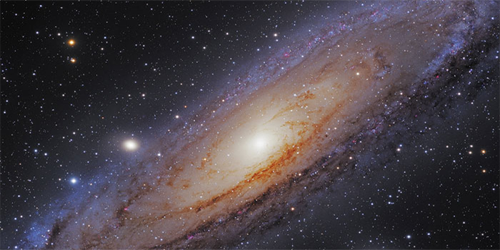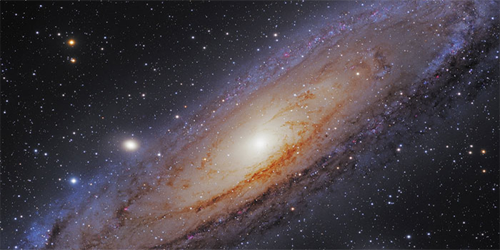Self-Interacting Dark Matter Scores Again
Self-interacting dark matter—a hypothetical form of dark matter made of particles that interact with one another—is a problem fixer in cosmology. On galactic and smaller scales, it can fix discrepancies between observations and predictions of the standard cosmological model, which instead considers “cold” dark matter that doesn’t interact with itself. And it does so while leaving intact the standard model’s success on larger scales. Manoj Kaplinghat from the University of California at Irvine, Hai-Bo Yu from the University of California at Riverside, and colleagues now show that self-interacting dark matter can also explain the diversity of galaxy rotation curves—graphs of the speeds of stars in a galaxy versus their distance from the galaxy’s center.
Stars and gas in galaxies usually rotate at a constant speed above a certain distance from the galaxy’s center: rotation curves are all essentially flat no matter how massive the dark matter “halos” in which they are embedded. But galaxies with dark matter halos of similar mass can have very different curves below that distance: some curves rise steeply towards the plateau and some gradually. This diversity is difficult to explain within the standard cold dark matter model.
Kaplinghat, Yu, and colleagues analyzed the rotation curves of 30 galaxies that represent this diversity well, and they compared the curves with those derived from a galactic model that they developed. The model includes a halo of dark matter that interacts with itself in the inner region, and it factors in the distribution of visible matter in the halo as well as the halo’s formation history. The researchers found that the model provides an excellent fit to the data, lending support to the hypothesis that dark matter is self-interacting.
This research is published in Physical Review Letters.
–Ana Lopes
Ana Lopes is a Senior Editor of Physics.





